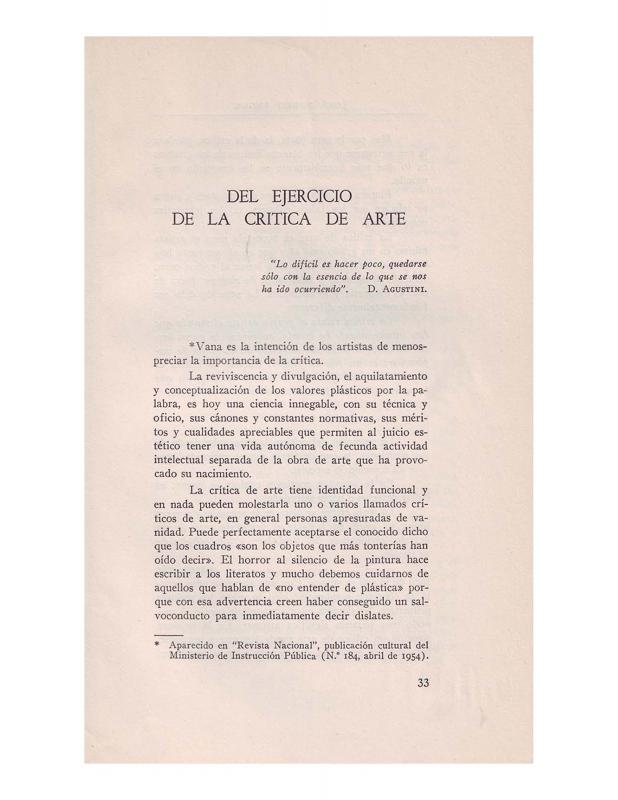This essay was written by the Uruguayan art critic, writer and gallerist José Pedro Argul (1903– 74), who from 1937, when selected by the Ministry of Public Instruction as a judge for the Primer Salón Nacional de Artes Plásticas, endlessly participated in the artistic medium and events that were officially propelled and linked to the government and dictatorship of Gabriel Terra. At an international level, he was elected as the president of the AICA (International Association of Art Critics) for several years, an organization that was founded in Paris in 1949 (Uruguay became a member in 1957). He published the book Pintura y escultura en Uruguay in 1958, and was given an award by the Universidad de la República for his achievement as a writer and arts manager.
The essay titled “Educación para la belleza y el arte” comes from a text written by José Pedro Argul in 1955. In it, he considers art as a result of “process.” He considered professionalism in art as the operative in those areas of knowledge that were under permanent specialization and actualization, this way discarding its commonly subjective appreciation [on this subject, see in the ICAA digital archive “Del ejercicio de la crítica de arte,” by José Pedro Argul (doc. no. 1227229)]. The critic referenced examples presented by educators in relevant activities in areas considered to be extra artistic, from technicians to calligraphers or mathematicians with the capacity to develop and communicate common aspects with artistic creation if the search resulted in concepts of “harmony,” “composition,” “form,” and “taste.” On the whole, his cultural concept was conservative and Eurocentric. His essay describes an America lacking a “unified style” that is seen in Europe. This above all is the habitual behavior, derived from an education of persistent preference over time.

